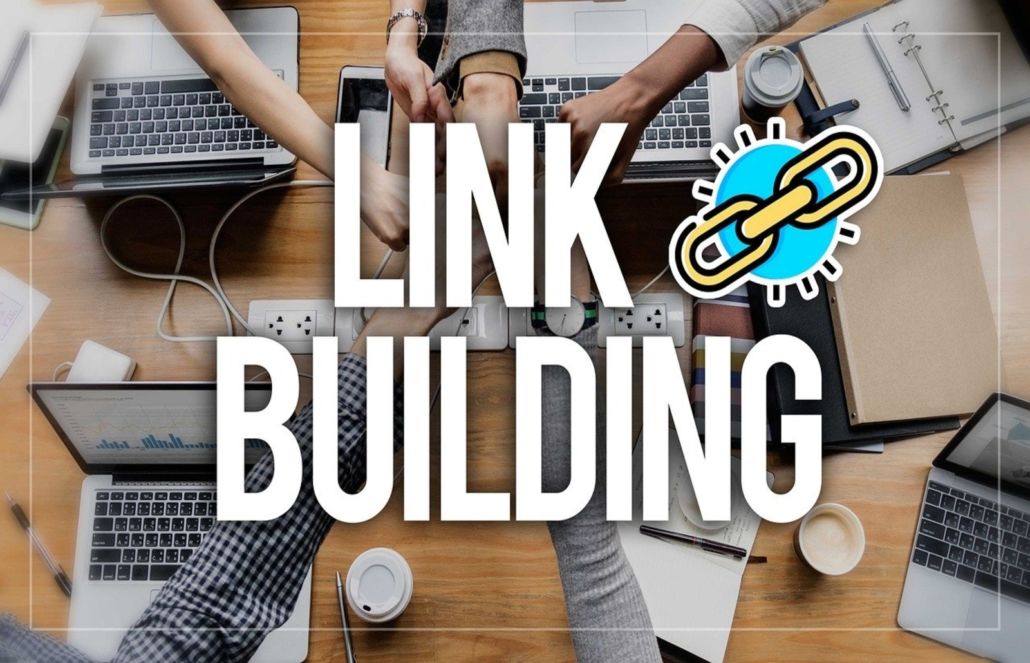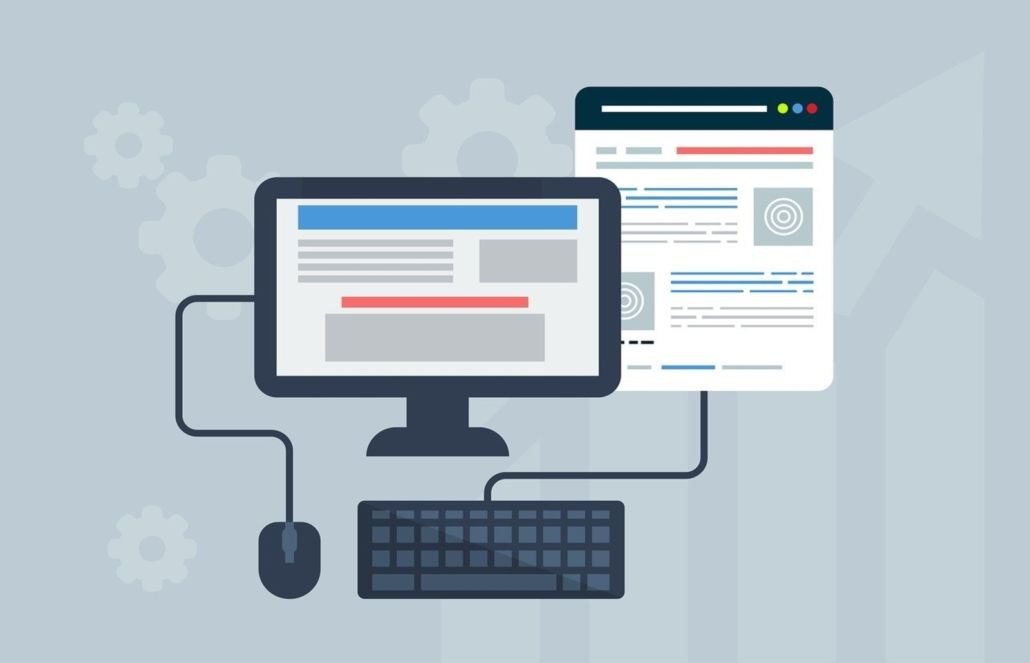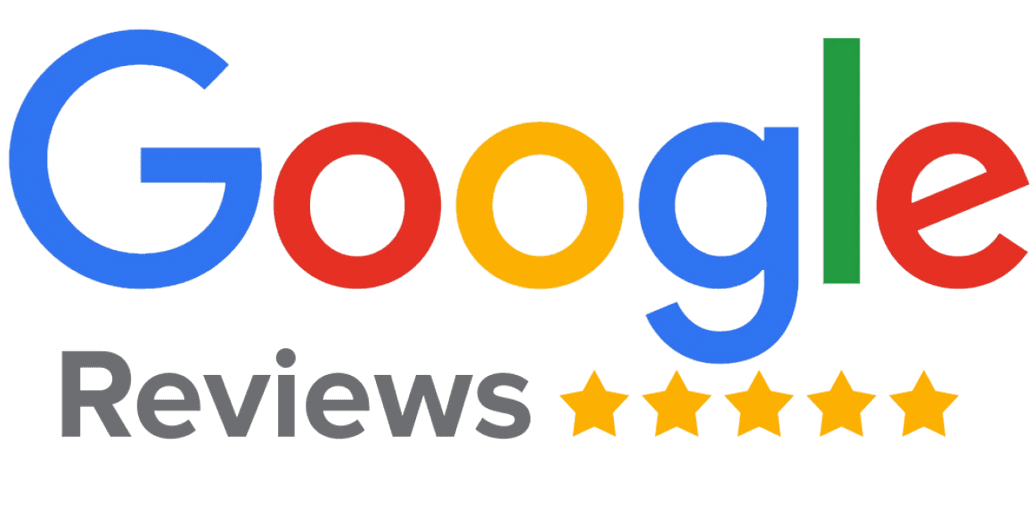Why It Pays to Make Friends With Google Ads
Online marketing has been around for, well, nearly as long as the internet. While the internet wasn’t initially intended to be used as a method of advertising, it quickly became apparent that it was the perfect tool to do just that.
The Evolution of Online Marketing
It was in the early 90’s, that business owners began using email as a way of promoting their products. And in 1990, the world’s first search engine, Archie, was developed. WebCrawler came a few years later in 1994, which saw a huge improvement for search engines with a version that could now index titles of a web page as well as its actual content.
Lycos was next to be developed and that was good in its own right, bringing with it the powers of ranking search results based on relevance. Then, in 1996, Google’s search engine appeared. This is the real point at which the whole idea of online marketing really took off.
Why Internet Marketing is Important
In any business, whether you have fierce competition or not, requires a certain amount of marketing in order to get people to see their products or showcase their services. At the end of the day, if people don’t know about a product or service, and they’ve never even heard of it, how can you expect to gain any new customers?
There are various ways in which companies go about marketing their products and services. While some are quite rigid and tend to stick to the same old tried and tested methods of advertising, others are more willing to try new techniques and strategies.
Different Approaches
When it comes to marketing, it’s very rare that two companies would ever share exactly the same strategy. While they may employ some of the same techniques or use some of the same mediums, they are almost certain to have completely different campaigns.
Whether it’s an organic marketing method that’s used such as word of mouth of mouth or blog posts, or inorganic forms such as Yell.com or Instagram Ads, it pays to get your marketing mix right early on. This includes the introduction of Google Ads into your marketing strategy.

Google Ads
Google AdWords, or Google Ads as we know it today, was released into the wild back in the year 2000, and since then, has evolved into one of the most prominent and indispensable marketing platforms – period.
When it first launched 20 years ago, there were just 350 advertisers signed up to the program, today there are millions. With a tool like this at your fingertips, as long as it’s used to its full potential can increase your company’s sales tenfold, if not more.
There are many reasons as to why it pays to utilise Google Ads. Here are some of them:
Wide audience
Anyone that knows the internet knows Google. In fact, it’s now so widely known that Google is even listed in the Merriam Webster Dictionary. The average amount of searches this engine deals with on a daily basis is around 5 That should give you some idea as to the number of potential customers you could reach. In addition to being able to reach such a large number of people quickly, Google Ads also has the capability to allow for a range of targeted marketing. Through the platform you can bid on both broad and narrow search terms to try and get the best results for your business. Bidding on general terms is good as will reach a wider audience. However, this can be costly, depending on who your competitors are. On the contrary, bidding on long-tail keywords may reach less people, but at least they will be people who know exactly what they want.
Suits any budget
If you’ve been in business a while, then you’ll already know that good advertising doesn’t come cheap. But that’s the old way. Nowadays, marketing platforms such as Google Ads are much more customisable and therefore more suitable for a wider range of businesses and budgets. With Google Ads you can choose how much you want to spend each month, making it easier to set a budget for. If the campaign is a success, and sales are up, you can increase the budget and the intenseness of it. On the flip side, if money is tight, simply lower the budget temporarily. You can also stop it instantly and not pay another penny.
Full control
While Google Ads is a paid for campaign platform, you still have full control of it. Previously it used to be a right pain trying to get your message out to as many people as possible, fast. With Google Ads, it takes just seconds. You can actually learn a lot about your market too using Google Ads. Through the campaign platform you can gain real insight as to what customer habits are in the industry, including what words they typed to find you, where they’re located, what device they’re using, and what time of the day they search. With this information, you can then tailor your campaign to refine your marketing efforts in addition to adapting or improving upon any relevant products or services. No more wasting money in advertising to those not interested.
Fast results
Unlike some forms of organic marketing where it takes time for word to get around, as soon as your ad goes live on Google, people will see it and begin to take notice. Regardless of if they buy from you, or even if they click on the link, people will see your name on the ad, and instantly this creates more brand awareness.With extensive experience and expertise, we can help to identify the critical areas you need to target. What’s more – our dedicated team will create, launch and execute cost-effective local SEO campaigns on your behalf.
Google Ads is one of the most powerful internet marketing tools there is. It’s comprehensive, it’s accurate and it gets results fast. And while it’s not a particularly difficult program to use, it can take a while to get used to.
Why not let us take some of the strain and devise a marketing campaign that best suits your needs? Get in touch now and see what we can do for you.
To learn more, contact ClickSlice today on 020 3287 3638 or email us at hello@clickslice.co.uk.
Local SEO: What You Need to Know
If you’re already familiar with search engine optimisation, you’ll know just how important it is for businesses. By increasing your rankings on search engines via SEO, you can reach a wide proportion of your target market. As your website traffic increases, you’ll have the potential to optimise your conversion rate and secure more sales.
What is Local SEO?
So, where does local SEO come in? Local SEO is similar to standard SEO in that it focuses on increasing your search engine rankings. However, local SEO enables you to tie your location or operating areas into your SEO activity.
Essentially, local SEO enables you to hone your search engine optimisation activity. By targeting specific geographical areas or regions, you’re targeting the people who are most likely to use your services. By doing so, you’re already thinking one step ahead and factoring potential conversions into your SEO campaign from the outset.
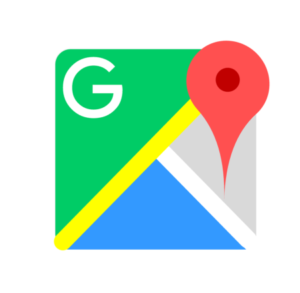
How Does Local SEO Work?
Take a look at the following example to get a better understanding of local SEO:
A plumber in Essex wants to increase their online visibility, so they launch an SEO campaign targeting the key term ‘plumbing firm’. After getting to the first page on Google, their website traffic skyrockets. However, their conversion rate plummets.
Why? Because their key term (plumbing firm) is relevant to people all over the world. The increase in traffic that firm has gained may originate from anywhere, which means it’s of little practical use. Someone with a leak in an apartment in New York isn’t going to hire a plumber in Essex, for example! Similarly, someone who needs urgent plumbing services in London probably isn’t going to engage with a company operating in Leeds.
By modifying the key term and using local SEO, you can transform these results. Now, the plumber uses the key term, ‘plumbing firm Essex’ and gets to the first page of Google. Crucially, the subsequent increase in traffic is from people who are looking for a plumbing firm in this area. The results are, of course, more relevant to their needs and they are more likely to engage with the company.
As well as securing an increase in website traffic, the plumber also sees their conversion rate improve, which equates to more profitability.
What If You Offer Nationwide Services?
If you operate all over the country or all over the world, don’t assume that local SEO doesn’t apply to you. Local searches have grown exponentially in recent years, which means users are inputting geographical data when searching for online content. Even if your company operates all over the country, you’ll only secure these customers if you meet their search criteria.
With people using ‘near me’ searches to access services and find companies, your SEO activity needs to have a local component in order to reach your target market. If it doesn’t, you’ll miss out on the chance to engage customers who are actively looking for a business just like yours.
Key Benefits of Local SEO
A local SEO campaign can be successful for all types of businesses. To find out why local SEO is so important for your company, take a look at some of the key benefits now:
1. It’s Cost-Effective
When you target local SEO search terms, it’s typically far cheaper than targeting generic versions. There may be a lot of competition for the key term ‘plumbing firm’, for example, but less competition for ‘plumbing firm Aberdeen’ or ‘plumbing firm Essex’. As a result, it will be cheaper to target the local variations, which means fewer costs for your business.
2. You Get Faster Results
As there is generally less competition for local SEO keywords and terms, you get faster results. When you’re not competing against as many other website owners, you have to do less to achieve the same results. Essentially, your rankings will increase more quickly and you’ll achieve your objectives swiftly.
3. You Generate Real Life Gains
Having millions of people visit your website on a daily basis can be beneficial in some instances, providing it equates to real-life gains. For most businesses, it doesn’t. A million visitors won’t generate revenue if they don’t convert. As conversion rates are typically higher for local SEO campaigns, you can generate real-life, quantifiable financial gains when using this marketing tool.
4. Your Content Can Feature in Google’s 3-Pack
Google’s 3-Pack shows the first three listings that match a user’s query on a map and displays your company’s contact details. Local SEO makes it easier to secure placements in the 3-Pack. In turn, being visible in the 3-Pack makes it easier for users to click-through to your site or contact your business directly.
5. It’s a Futureproof Form of Marketing
When you’re creating your marketing strategy, it’s important to think about how user behaviour is changing. The increased usage of mobile devices has led to the growth of ‘near me’ and local searches. With this trend set to continue, you can be confident that local SEO will continue to be an effective way to reach your target audience.
Use Local SEO to Boost Your Business

Now you know why local SEO is so beneficial to businesses, you’ll be eager to launch your first local campaign. But how do you get started? Most companies need to target numerous areas in order to reach users who are most likely to become future customers, which sounds like a lot of work!
While SEO campaigns can require a lot of work, they don’t have to be. At ClickSlice, we use a wide range of digital tools to streamline campaigns and enhance results.
With extensive experience and expertise, we can help to identify the critical areas you need to target. What’s more – our dedicated team will create, launch and execute cost-effective local SEO campaigns on your behalf.
To learn more, contact ClickSlice today on 020 3287 3638 or email us at hello@clickslice.co.uk.
Launch a Link Building Campaign in 5 Easy Steps
If you want to improve your SEO rankings, you need a winning link building campaign.
Link building is a form of off-page SEO that helps to improve the credibility of your website. Getting links to your site placed on other reputable sites establishes your authenticity and boosts your rankings.
While the premise behind link building sounds simple enough, a successful campaign can be tricky to execute. If you want to get on the first page of Google, take a look at this step by step guide and start building your link building strategy today…
1. Look at domain authorities
Every website has a domain authority (DA). The DA is a number between 1-100 and, the higher the DA is, the more authority the site has. A website’s domain authority indicates how highly it’s likely to rank on search engine results pages (SERPs). Essentially, the higher a website’s DA; the better.
Having your linked placed on high domain authority sites will give your own webpages more credibility and have a greater impact on your own rankings. Getting a link on a site with a DA of 70 will have much more effect than having a link on a site with a DA of 30, for example.
2. Assess the audience
Even if a site has a high domain authority, you won’t necessarily want to target it for you link building campaign. The most effective way to build links to your site is to target other webpages that are relevant to your audience.
If you’re an online clothing retailer, for example, you may want to target fashion blogs and websites of well-known publications, providing they’re reaching your intended demographic. This means that your links are more likely to be relevant to the users who are seeing them on the target page. As well as getting more clicks, the relevancy of your content will increase your conversion rate.
Here, you can see why link building is so powerful. By securing a link on a relevant site, you can boost your rankings on Google. By securing link placements on sites that target the same audience, you can organically grow your reach and increase your sales.
3. Build a network
Contacting site owners or editors and asking them to feature your links is one way to start your campaign. However, high DA sites receive numerous link requests every day, so don’t hold out too much hope that you’ll get a positive response (or any response!).
Most sites that accept link placements have an established eligibility criteria and proposal formats. Be sure to read these thoroughly and submit any requests in accordance with the site’s requirements.

Of course, sending out random requests is time-consuming and doesn’t guarantee results. Cultivating a professional network can be a far more effective way to secure link placements, particularly when you’re running an on-going campaign.
If you don’t currently have a network that can provide the assistance and introductions you need, don’t panic. Get involved in industry events, attend exhibitions and trade shows and sign up to online seminars. With the right approach and attitude, you can build a strong network in no time.
4. Write great guest posts
If a website owner agrees to feature your link on their site, they won’t simply display your link randomly. Instead, you’ll need to supply guest content that contains the link you want them to feature. Crucially, this guest content needs to appeal to their users and meet their criteria.
In many cases, your guest content will be displayed with your name and your company name, so it’s a great way to promote your business. If your content is good enough, you might even find that site owners contact you and ask to display your links on their site!
Becoming well-known in your industry or establishing your credentials can transform your business, so it’s well worth honing your writing skills or creating content that prompts discussion. When your guest content is being actively sought out by other site owners, you’ll find it’s much easier to secure link building opportunities.
5. Prioritise quality over quantity
Many people assume that the more backlinks you have, the higher your rankings will be. Unfortunately, that’s not the case. Google is savvy when it comes to figuring out whether backlinks are genuine or whether they’re simply being used for SEO purposes.
Securing backlinks to less-than-reputable sites won’t have a good impact on your rankings. In fact, it will cause you to drop down the rankings on SERPs. Similarly, featuring your link on sites that aren’t relevant to your content is likely to have a negative effect on your rankings.
Instead of focusing on how many backlinks you can get, spend your time securing high-quality backlinks. This will enhance your site’s credibility and have the biggest impact on your rankings.
Start Link Building Today
If you don’t already have a link building strategy in place, it’s time to create one. Backlinks are a major ranking factor, so it’s one aspect of SEO that you really need to focus on. Remember – link building isn’t a one-off activity. You’ll need to ensure that existing links remain active and continuously secure new backlink opportunities if you want to maintain your rankings.

As many SMEs don’t have the time or resources to devise, create, execute and monitor a successful link building campaign, they struggle to achieve good SEO rankings. At ClickSlice, we understand the difficulties SMEs face, which is why we offer dedicated link building packages.
Managed by experienced SEO specialists, our link building services are unique to every client and designed to deliver measurable results. To find out more or to launch your link building campaign today, contact ClickSlice now on 020 3287 3638.
Is Site Functionality Affecting Your SEO?
When it comes to SEO, there is a long, possibly endless list of things to consider. From keyword research to social shares; content strategies and backlinks; images and H tags – there’s always more you can do to boost your SEO rankings. But what about site functionality?
In a race to get to the top of page 1 on Google, most business owners embark on intensive SEO campaigns. However, they tend to focus on things like content, outreach, local citations and social media activity. While these elements are all critical to successful SEO, there is one important area that gets overlooked: site functionality.
What is Site Functionality?
Site functionality simply refers to what your website is capable of and how well it works. If your site’s secure, easy to navigate and free of errors, chances are it’s got good functionality. A website that’s full of broken links and delivers a poor UX, on the other hand, definitely has poor functionality.
Your website is the centrepiece of your online presence, so it’s vital that it impresses visitors and transitions them through your sales funnel. Whatever goal you’re working on – whether it’s increasing brand awareness, optimising conversion rates or cultivating customer loyalty – good site functionality is critical to your success.
However, site functionality doesn’t just have a direct impact on sales and user satisfaction; it affects your SEO too. In fact, site functionality is one of the key areas that Google assesses when ranking your webpages.
By overlooking site functionality when planning your SEO strategy, you’re ignoring one of the most basic elements. Good rankings rely on optimum website functionality. Make this the basis for your SEO activity and you’ll be off to a great start.

Improving Your Website’s Functionality
Optimising site functionality doesn’t have to be as difficult as it sounds. You might find that you’ve already got some of these points covered and, if not, you’ll have the insight you need to turn things around. To find out what changes you need to make, take a look at some of the aspects of site functionality that impact your SEO rankings:
1. Mobile usability
An increasing number of people are accessing the internet via mobile devices. Advances in technology, Wi-Fi and 4G/5G mean it’s easier than ever to get online using a tablet or smartphone. Of course, the reduced cost of data and widespread availability of public hotspots has helped the mobile trend to flourish too.
In fact, mobile internet use has increased so much that Google has switched to mobile-first indexing. Essentially, if your site isn’t mobile friendly, you’re not going to get the top rankings you’re after. While businesses used to rely on two separate sites – desktop and mobile – this approach limits your SEO success and requires twice the work.
By using responsive web design, you can satisfy Google’s mobile-first indexing algorithm and ensure users have a positive UX, regardless of what device they’re using.
2. Site speed
10 seconds might not sound like a long time but sit behind a screen and set your stopwatch. It sure feels like a long time now, right?!
If your webpages take anywhere near to 10 seconds to load, then you have serious functionality problems. In fact, Google has confirmed that a very slow loading speed is a negative ranking factor. This means you could actually harm your rankings by failing to address this issue.
On mobile devices, your site really needs to load in under 3 seconds. However, even loading speeds of 2.9 seconds will only put you ahead of 50% of sites on the internet. Upgrading to a better server or hosting provider is essential if you aren’t getting the speeds you need to rank highly.
If you’re still not convinced, monitor your bounce rate at existing site speeds and check them again when your loading speeds are reduced. Users are impatient when it comes to waiting for a webpage to load and you could be losing a substantial part of your audience simply because your site’s too slow.

3. Website Security
People like to engage with businesses they trust. No matter what industry you operate in, chances are you’ll be asking users to part with information when they visit your website. Whether you’re collecting email addresses for a newsletter subscription or processing sensitive financial information via online sales; users won’t give up their details if they don’t trust your brand.
Most users are aware of the difference between http:// and https:// in a URL, so make sure your security certificates are in order. However, users won’t generally spend time investigating a site to determine its authenticity or assess its security measures. Instead, they’ll rely on the overall aesthetic, functionality and security indicators.
Whatever security measures you take to safeguard your business and your customers, make sure you advertise them! Badges, graphics and imagery are widely available when you implement site security, so ensure they’re displayed clearly. This is particularly important on sites that offer online transactions but, even if you don’t process purchases online, be sure to let your users know just how seriously you take their online safety.
Boost Your Rankings with the Right SEO Strategy
These are just three site functionality issues that have an impact on your SEO rankings. There are plenty more functionality elements that affect your rankings too, so it’s important to take a comprehensive approach when you’re evaluating your site’s current performance.
Once you’ve covered the basics of site functionality, it’s time to begin working on other areas. Both on-page and off-page SEO is critical to overall success, so you’ll need to consider your site layout, content strategy, outreach, PPC campaigns, social media performance, influencer links and much, much more.
If you don’t have an in-house SEO team, chances are you won’t have the time or the resources to implement a sure-fire SEO strategy. Fortunately, you don’t need to worry. At ClickSlice, we specialise in creating, implementing and delivering successful SEO campaigns. To find out how we can transform your business, contact us today on 020 3287 3638 or email us at hello@clickslice.co.uk.
4 Must-Use Marketing Tools for SMEs
Whether you’re a sole trader working alone or heading up a growing enterprise, you’ll want to make the most of the tools at your disposal. When it comes to marketing, leveraging your digital assets with the right tools offers high rewards.
Using the right selection of online marketing methods enables you to maximise results while minimising costs. The potential to substantially increase your sales while reducing your outgoings is irresistible for any business. For SMEs, however, the ability to make enormous gains from even modest resources could be your route to commercial success.
If you want to increase your sales and get the most from your budget, check out the 5 marketing tools you need to be using now:
1 - Backlinks
Backlinks are critical if you want to work on your SEO and increase your Google rankings. Every business owner knows they need a website to succeed. But are you doing everything you can to increase its visibility?
Your webpages need to rank highly for relevant keywords so that users can see your content. One of the most effective ways to achieve high rankings is via backlinks. When other credible sites feature your links, it boosts your rankings in two ways.
Firstly, securing a backlink on a popular site promotes your brand and allows users to clickthrough directly to your content. Secondly, having backlinks on high authority domains elevates your content in the eyes of Google. As a result, your credibility and authenticity increase, thus leading to higher rankings and more traffic.
2 - Video Marketing
Video is the most popular type of online content, so it’s essential you’re using it. According to HubSpot, more than half of consumers want to see more video content from brands they’re interested in. What’s more, Wyzowl maintains that 8 out of 10 people have purchased digital content after viewing a video featuring it.

Many small businesses steer clear of video marketing because they assume it will blow their budget. While it’s true that producing great video content can require more resources than other online marketing tools, this shouldn’t prevent you from leveraging your engagement with video content. Although you may need to input more resources, the increased brand awareness, engagement and sales will offer an impressive ROI.
Remember – don’t just share your video content on your website. Users watch a billion hours of video a day on YouTube alone and millions of users consume video content across social media platforms. Sharing your videos on external sites will ensure your content is visible to your target audience and provide them with a direct route to your website.
3 - Influencer Marketing
Often categorised as affiliate marketing, influencer partnerships can take many forms. If you offer an influencer a commission for every sale they facilitate or a kickback for every user they direct to your site, you can implement a traditional affiliate marketing model. This works particularly well for SMEs because you’re only paying for the value you actually gain.
Alternatively, you may want to fund your influencer marketing by paying a flat fee for placements, promotions or endorsements. This means you’ll get to keep the entirety of the profits you make as a result of the campaign, although it does involve a higher level of risk.
Influencer marketing is a relatively new form of online engagement but it’s one that’s grown substantially over the last 18 months. As brands realise just how much sway influencers have over their target demographics, the benefits of partnering with them are all too clear.
If you’re looking for a way to fast-track engagement or you want to build your customer base in record time, an endorsement from a well-known influencer can help you to achieve your goals. Simply remember to select your influencer partners based on their credibility, audience and impact. By doing so, you’ll ensure that your products and services are being endorsed by someone your target demographic trusts and, crucially, by someone who has a direct impact on how they behave online.
4 - Local SEO
Any enterprise can benefit from local SEO, but SMEs are perfectly placed to add value to their business with local search engine optimisation. If you operate from a customer or client-facing location, you’ll obviously want to promote your premises within a specific geographical area. To do this, you’ll need a strategic local SEO campaign. As your brand becomes the go-to business for relevant products or services in the area, you’ll begin to outperform your competitors and secure a larger share of the market.
However, it isn’t just bricks and mortar businesses that need local SEO to succeed. Even if you operate solely via the internet, a local SEO campaign can boost your brand in more ways than you might think.
When you’re implementing a digital marketing initiative, it’s tempting to try and target everyone. After all, the more people who engage with you, the higher your profits can be. In reality, however, successful marketing requires a more nuanced approach. Attempting to target everyone with the same content and delivery methods won’t just be ineffective; it could inadvertently harm your brand.
Instead, it’s important to segment your target audience. By recognising the different needs and wants of these segments, you can cater to them directly. This enables you to provide tailormade content that piques their interest, responds to their needs and persuades them to purchase.

As you segment your target audience, their geographical location is just one factor that could have an impact on their online behaviour and consumer footprint. Due to this, you’ll want to use local SEO to cater to your target demographic and provide them with the content, products and services they’re actively looking for.
Marketing for Success
Successful marketing means leveraging a wide variety of tools and methodologies. To achieve your goals and grow your business, you’ll a need affordable, results-driven digital marketing strategy. And that’s where we come in.
To find out how we can help you grow your business, contact ClickSlice now on 020 3287 3638.
5 Digital Marketing Strategies for SaaS Companies
SaaS companies must take a different marketing approach than many other businesses. Most companies can benefit from physical marketing and using traditional methods like brochures, TV ads, and word of mouth.
These traditional methods aren’t necessarily applicable to SaaS companies due to the digital and online nature of what you do. You must look at alternatives therefore and to help boost your sales and visibility, we have listed 5 digital marketing strategies that SaaS companies can utilize.
1. Content Marketing
Content marketing is widely used by digital companies and it can have a great impact on website traffic, user engagement, and conversion rates.
For SaaS companies, content marketing should be centered on giving useful info relating to your software. This could be in the form of guides, tutorials, video walkthroughs, blog articles, and tips on how to use the software.
Aside from giving your customers a better experience and understanding of your software, you can also utilize content marketing to boost your SEO strategies.
2. PPC Advertising
Pay Per Click advertising is big business and it is a relatively cost-effective method for SaaS companies to use.
Services like Google Ads operate on a PPC basis in which you only pay when you get a positive action like an impression or click. This means you can control your marketing budget while always getting the right results.
Your SaaS company could create tailored ads to target your ideal customers and use keywords that you are already using as part of your SEO strategy.
3. Free SaaS Software Trials
It’s a known fact that SaaS companies that offer free software trials typically perform better. I can attest to this – I love photo editing and I would never purchase photo editing software without testing the product first.
Free trials are essential so that people can get a taste of what your software is about and how it works. Of course, you must put some type of limitation on the software and protect it so that people can’t indefinitely use it for free, but still, offering free trials is an excellent incentive to buy the software.
4. Social Media Marketing
Social media marketing can be effective, especially if your SaaS audience is a younger generation. Statistics show that a high percentage of young adults use social media for product research before making a purchase.
You can tap into this huge potential market by creating engaging content that is useful to your followers on a regular basis. The key is consistency and by creating a regular posting schedule and interacting with your followers you should be able to increase the visibility and awareness of your SaaS services.
5. SaaS SEO
SEO for SaaS companies is an especially effective marketing strategy and it can boost your business in numerous ways. It drives traffic to your website and software pages, improves brand awareness, and helps boost your online visibility. These are all important things if you want to stand out from the competition who are offering similar software services. SEO includes keyword research and finding words that people would search for on Google to find your software.
You then have to incorporate these keywords into your online content such as blog posts, website pages, and social media posts. The aim is to get your site ranked highly on Google.
Incorporate These Marketing Strategies to Boost Your SaaS Sales Today
A sound digital marketing strategy is a must-have for any SaaS business due to the nature of your service. Physical marketing can be effective, but turning to the online world and using techniques like PPC advertising, free software trials, and social media marketing will always yield better results.
Increased Internet Use Offers Digital Marketing Gains
As millions of people acclimatise to life in lockdown, the internet is proving to be more vital than we ever could have imagined.With so many people spending time online, digital marketing offers higher returns than ever before.
Facilitating remote working arrangements and keeping people connected, the internet has been central to the global response to COVID-19. Of course, the internet isn’t just providing a crucial tool for work and relationships. It’s also critical to delivering a wide range of at-home entertainment to billions of people around the world. From streaming services to online gaming, there are a variety of ways to keep boredom at bay via the internet.
Although digital entertainment was growing significantly prior to the coronavirus pandemic, the introduction of lockdown restrictions has fuelled the trend. While some people are using internet entertainment platforms more often, others are signing up to online streaming sites, multiplayer games and forums for the first time ever.
How is Your Business Coping with COVID-19?
The impact of COVID-19 on the business community is not yet fully known. Some industries are experiencing phenomenal demand while others are unable to operate and remain at a standstill. For many businesses, the pandemic has thrown up logistical and practical challenges which require creative solutions.
You may be offering new services in a bid to overcome social distancing measures, for example, or slowing down production in order to accommodate a reduced workforce. Some firms are increasing in-house automation, while others are relying on emergency loans to provide a much-needed injection of funds during a difficult time.
Although different industries, sectors and businesses will require varying responses to survive the economic impact of COVID-19, there’s one thing that’s universal: the need to engage with your target audience.
No matter what demographic you serve or what industry you operate within, maintaining engagement is critical to business survival. When your company is present and active online, you can keep your existing customer base up to date on how you’re operating. Furthermore, your efforts and contributions to the national and global response should be widely shared amongst your loyal fanbase.
However, it isn’t just engagement with your existing customers that you need to focus on. At a time when consumers and businesses are struggling to access the products and services they need, there is a significant opportunity to attract and acquire new customers.

Digital Marketing During Times of Crisis
As we explained last month, many businesses reduce their marketing activity at the first sign of economic difficulties. Perhaps understandably, many people assume that a temporary suspension of marketing activities will reduce their outgoings and enable them to redirect funds to critical bills. However, abandoning your digital marketing strategy now could be disastrous for your business.
Marketing your brand isn’t a one-off activity. It begins from the moment your brand is conceived and should continue even after you stop trading. Ceasing marketing activity during a time of unprecedented global difficulty means you’re effectively abandoning your customers and your target audience. In short, it doesn’t show the kind of loyalty you would hope to see from your regular customer base.
A lack of marketing means you’ll miss out on the unique opportunity to serve your audience when they need it most. In fiscal terms, this equates to turning down business and giving profitability the cold shoulder.
Regardless of how COVID-19 has affected your operations, successful marketing activity can keep you engaged with your audience. When they think of related products and services, you want to ensure you remain in the forefront of their minds. Even if you’re unable to offer your usual USPs, you can still generate goodwill amongst your target demographic. Not only is this good practice, it’s vital if you want to return to a prominent position in the market.
Re-start Your Digital Marketing Activity Today
If you’ve already stopped or reduced your marketing activity, there’s no need to panic just yet. It’s not too late to reengage with your audience and get your brand back on message. If you want to use all the tools at your disposal to keep your business thriving amid COVID-19, take a look at these top marketing tips:
Social Media Marketing
People are spending an increasing amount of time on social media platforms, so it’s time to ramp up your own social media activity. Creating new content and repurposing existing material is a great way to inform, entertain and engage with your target audience across all social media sites.
SEO
The ultimate way to increase organic traffic to your website, updating your SEO strategy will enable you to acquire a new raft of customers. As online behaviour changes in response to COVID-19, your SEO strategy needs to evolve accordingly. With an emphasis on keyword research, you can understand how your target audience are searching for content. Once you’ve got this information, you can update your SEO strategy accordingly. By doing so, you’ll climb the rankings and secure a top spot for your webpages.

PPC
Paid advertising is always an effective way to increase your reach and it offers remarkably swift results. If you’re eager to get your brand back up and running, an innovative PPC campaign can help. Offering highly targeted advertising, you can increase your conversion rate at a time when sales really count for everything.
Kickstart Your Business with ClickSlice
When you’re dealing with financial uncertainty, it’s essential that your marketing activity offers a high return on your investment. To achieve this, you’ll need to ensure that your digital marketing delivers measurable and actionable results.
At ClickSlice, we work with businesses across a range of industries to increase brand awareness, boost conversions and enhance profitability. By increasing your rankings, optimising conversions and turning your brand into a social media powerhouse; we’ll help you overcome the challenges you’re facing.
To learn more, contact ClickSlice today on 020 3287 3638 or email us at hello@clickslice.co.uk
Why Marketing Matters – Now More Than Ever
In times of economic hardship, many businesses impose cost saving measures in a bid to reduce expenditure. As companies adopt different strategies in an attempt to cope, well-honed contingency plans are being rolled out. However, the recent outbreak of coronavirus is having a greater impact than almost anything before it. As a result, even the most well-prepared companies are struggling to stay afloat.
For small businesses, in particular, the economic outfall will be hard to overcome. Already, firms are significantly reducing their marketing budgets or scrapping them altogether. Although this may seem like a savvy way to save money, failing to market your business now could make it harder to recover in the long term.
All organisations will be affected by the pandemic that’s sweeping the globe but there are ways to mitigate the impact it will have on your business. With the right leadership, making the decision to maintain your marketing now could help your business overcome the widespread threats it’s facing. Here’s why:
Retaining Your Customer Base
As any business owner knows, acquiring customers is costlier than retaining them. That’s why companies place a significant emphasis on securing repeat business and increasing customer lifetime value. Failing to implement marketing activity now means there’s a good chance your existing customer base will be lost. So too will the investment you’ve made into cultivating this loyal band of customers.

If your brand is able to suspend trading, there’s no guarantee your customer base will be waiting for you once you’re able to return to the market. Having to start from scratch and build a new customer base may be a burden too far in upcoming months. To avoid this risk, maintain your marketing activity now and let the comparatively minimal investment pay dividends in the future.
Low Cost Marketing
Traditionally, companies reduced their marketing and advertising efforts when they needed to cut costs. However, offline advertising was far more costly than new forms of digital advertising. Today’s marketing methods offer better results at a fraction of the cost. By reducing your digital marketing activity now, you could make a relatively small saving but lose far more in terms of income.
As many companies use a combination of online and offline marketing, modifying your budgets may be prudent. By reducing offline advertising, for example, you could save significant resources and minimize your costs. Conversely, investing these funds into digital marketing will help you to connect with your target audience and maintain your place in the market.
Launch New Products and Services
The majority of businesses are looking for new ways to trade amidst the confusion and disruption caused by coronavirus. Depending on your sector, this may mean delivering your services in new ways or launching different product lines. To do this, you’ll need to make your target demographic aware of your company’s intentions and upcoming events.
Digital marketing is the most effective way to do this in times of economic success and the same is true during times of financial hardship. With low cost campaign options, widespread reach and profitable results, digital marketing will enable you to convey critical information, such as service changes, to your target audience.
Increasing Internet Usage
One of the reasons digital marketing is so effective is because so many people use the internet regularly. In fact, over 3 billion people worldwide are online. With people spend more time in self-isolation, they’re turning to the internet more than ever before.

An increasing number of people are logging on to work, to communicate, to socialise and to ease their boredom and anxiety. Companies who choose to continue marketing their businesses online will have the opportunity to reach a growing audience. No matter what demographic your target market consists of, they’re present on the internet in growing numbers and digital marketing gives you the tools you need to connect with them.
Maintain Brand Loyalty
Retaining customers and gaining their trust is always a top priority for businesses and it should be one of your main focuses now. As society faces an unprecedented threat, people are turning to brands they trust for information, guidance, support and even entertainment and distraction.
Digital communication is the fastest way to issue a message or reach your audience. As businesses are forced to respond swiftly to changing government guidelines, digital marketing is the only realistic way to communicate with your customers and target audience in these times.
Whether you need to issue real-time updates about changing business practices, you want to reassure customers that you’re still providing services; or you simply want to offer people a light-hearted diversion in a difficult time, digital marketing is the way to do it.
From tweets and Instagram stories to video messages, emails and blog posts; digital content can be delivered directly to your customers and shared worldwide in a matter of seconds.
Maintain Your Business with Digital Marketing
At ClickSlice, we understand the benefits digital marketing can bring, now more than ever. We’re working hard to ensure businesses can overcome the troubling times ahead. With a compassionate, nuanced and strategic approach, our dedicated team is working diligently (and remotely!) to help our clients retain and improve their place in the market.
Whether you’re an entrepreneur with a growing business, an owner of an established SME or running an international company, we’re on hand to provide the advice, assistance and expertise you need to navigate this unchartered territory.
Talk to us today on 020 3287 3638 or email us at hello@clickslice.co.uk
3 Reasons Your Rankings Have Dropped – And What To Do About It
Achieving high search engine rankings is a top priority for most businesses and site owners. By ensuring your webpages rank highly for relevant keywords, you can increase brand awareness, secure a high conversion rate and boost your sales. It’s essential, therefore, that you outrank your competitors and reach your target market.
However, effective SEO isn’t just about achieving high rankings. To ensure on-going success, you need to maintain these rankings too. Many businesses assume the hard work is over once they’ve secured a top spot on search engine results pages (SERPs). In reality, rankings aren’t static, and your webpages could drop down the list at any time.
If you’ve noticed your rankings are gradually reducing, it’s important to understand why. Once you know what’s causing you to lose your position on SERPs, you can take action. The most common reasons for losing rankings include:
1. Dead Backlinks
Backlinks are a critical element of SEO. Known as a key factor of off-page SEO, they connect your webpages to external sites. High authority domains are particularly important when it comes to securing backlinks as they help to endorse your own webpages.
However, websites change over time. Securing a high authority backlink one month doesn’t necessarily mean it will be there next month or month year. In the same way that your internal links may need to be updated or removed to eradicate dead links, it’s important to check the validity of your backlinks.
If you’ve cultivated a good backlink network, don’t simply assume that it will continue to help you get great rankings. If these pages are removed or modified, your backlink could disappear. As you won’t necessarily be notified, the first sign of disappearing backlinks could be a drop in your rankings.

2. Out of Date Content
Google rates websites that regularly update their content. As well as giving users access to fresh information, posting new content gives people a reason to revisit your site. In a best case scenario, failing to update your content means an increased bounce rate, reduced time being spent on your site and a boring user experience. At worst, out of date content could mean you’re delivering inaccurate information or advice to your users.
It’s easy to see why Google won’t rank webpages highly if they’re not updated. The search engine is focused on redirecting to content that’s accurate, valid and useful. Out of date content simply doesn’t tick these boxes, so you can’t expect to rank highly with it.
3. Evolving User Behaviour
To secure consistent high rankings on SERPs, you need to cater to user behaviour. Knowing how users search for information is critical to making sure they find your content, for example. But user behaviour can change at an alarming pace. When users begin to search different or consume information in a changing way, your site needs to be ahead of the game.
A good example of this is the move towards non-text based searches. Increasing numbers of people are using voice searches to access online content. If your SEO strategy is still focused solely on text-based searches, you aren’t catering for the change in user behaviour. As a result, you can expect your rankings to drop over time.
No matter how effective your SEO activities have been thus far, you need to pre-empt and respond to changes in user behaviour if you want to maintain high rankings.
How to Deal with Plummeting SEO Rankings
If you’ve noticed your rankings dropping, it’s essential to take steps to rectify the situation. The fact that you’re already moving down SERPs means things are already going wrong with your SEO campaigns. By responding swiftly, you can prevent your rankings from dropping even further and, potentially, climb back to the top of the rankings once again.
To stop your hard work and SEO campaigns going to waste, take a look at these top tips for preventing a decline in your SERPs rankings…
1. Check for algorithm changes
Google and other search engines introduce new algorithm changes all the time. In addition, existing algorithms may be modified slightly. If you’re managing your SEO in-house, it’s vital to keep on top of these changes.
When algorithms change, the way sites are indexed and ranked can change accordingly. This means you’ll need to tweak your webpages and SEO activities to ensure you’re satisfying the latest algorithms. Maintaing high rankings is an on-going process, so keeping on top of algorithm changes should be a top priority.
2. Understand user behaviour
If you’re losing your position on page 1 on Google, it may be because users are searching for content slightly differently. They may be using a different form of tech to access content or they may simply be inputting different words and search terms. Whatever the change is, it’s important to understand it. Once you know how user behaviour is changing, you can update your SEO campaigns in response. This will ensure your content is still being presented to users when they search for terms and keywords that relate to your business, brand or site.
3. Confirm backlinks are active
As well as checking your own site for dead internal links, you’ll want to ensure your backlinks are still alive and kicking. If they’ve been removed or if the authority of a site you’re linked to has dropped, this could be affecting your rankings. Fortunately, this can be very easy to rectify. By securing new, high authority backlinks, you can effectively re-endorse your webpages in the eyes of Google. In doing so, you’ll prevent your rankings from dropping any further and begin to climb back up to the top.
4. Update your content
If you haven’t implemented a content marketing strategy, it’s time to do so. Your site needs to be updated on a regular basis, so plan ahead and schedule information, insightful and original content. In addition to this, revisit your existing content and update it where necessary. If you feature cornerstone or evergreen content on your site, for example, make sure it is still accurate and relevant to your users.
Remember – content is solely about what’s present on your site. Your content extends to your social media posts, video marketing and email newsletters. Regular audits will help to ensure your content is up to date, accurate and properly optimised.
5. Get a FREE personalised video audit
If you’ve updated your content, checked your backlinks, studied user behaviour and responded to algorithm changes but your rankings still aren’t where you want them to be – it’s time to seek expert help. With a free, personalised video audit, our expert SEO strategists will analyse your website and identify issues which could be harming your search engine rankings.
With a tailormade video for you to access, you can benefit from bespoke advice and information relating to your site. Why make do with generic tips when you can access custom advice for free?
Restore Your SEO Rankings Now
To find out more about maintaining top SEO rankings, get in touch with ClickSlice today. You can arrange your FREE personalised video audit by contacting us on 020 3287 3638 or emailing us at hello@clickslice.co.uk.
Simply tell us your URL, keywords and areas you’re targeting, and our in-house SEO consultants will begin preparing your bespoke website audit. With limited free audits available, there’s no time to waste if you want to secure top rankings. Contact ClickSlice now and secure the top spots on SERPs today!
How to Get on Page 1 of Google
Over 75% of users never look beyond the first page of search results.
Getting your website to page 1 on Google has never been more important.
With the first five search results accounting for over 67% of clicks, getting to the top of page 1 should be every businesses top priority.
Of course, understanding Google’s indexing algorithms isn’t necessarily straightforward. Furthermore, you are competing with millions of other websites who also want to secure the top spots. Fortunately, help is at hand.
At ClickSlice we know what it takes to get your business to page 1 of Google. If you want your rankings to soar, take a look at these top tips for SEO success…
1 - Choose A Keyword
The first thing you need to determine is what keyword (search phrase) you want to be on page 1 for. Your site doesn’t need to rank highly for every search a user makes.
Instead, you want to rank highly for keywords with high buyer intent, AKA the keywords that are most likely to generate your business money.

Let’s imagine you run a plumbing business based in London… targeting a keyword like “How do I unblock a sink” is probably not the best strategy as people who search for this are typically interested in learning how to unblock a sink themselves, meaning they will not require your services.
You’re much better off targeting a keyword with a high buyer intent behind it such as “Sink unblocking London”.
People who search for “Sink unblocking London” are interested in finding someone who can unblock their sink. Which as a plumber would be a service you offer, making it a perfect keyword to target.
Pro tip: If you run a SAB (Service Area business) you can rinse and repeat this method for all the locations you target.
2 - Check The Competition
Now you’ve got your keywords finalised, it’s time to look at who you’re competing against.
Just as it’d be tough to start a successful supermarket store across the road from Tesco, it’s difficult to rank on the first page of Google when the competition is fierce.
So the next step is to understand the competitive landscape—starting with who you’re up against.
To do that, search for your keyword and look at the first page of results.
If all you see is massive well-known brands and you’re a small start-up that nobody has ever heard of, then getting to the first page is going to be quite tough.. At least in the short to medium time frame.
For example, look at the search results for “car insurance.”
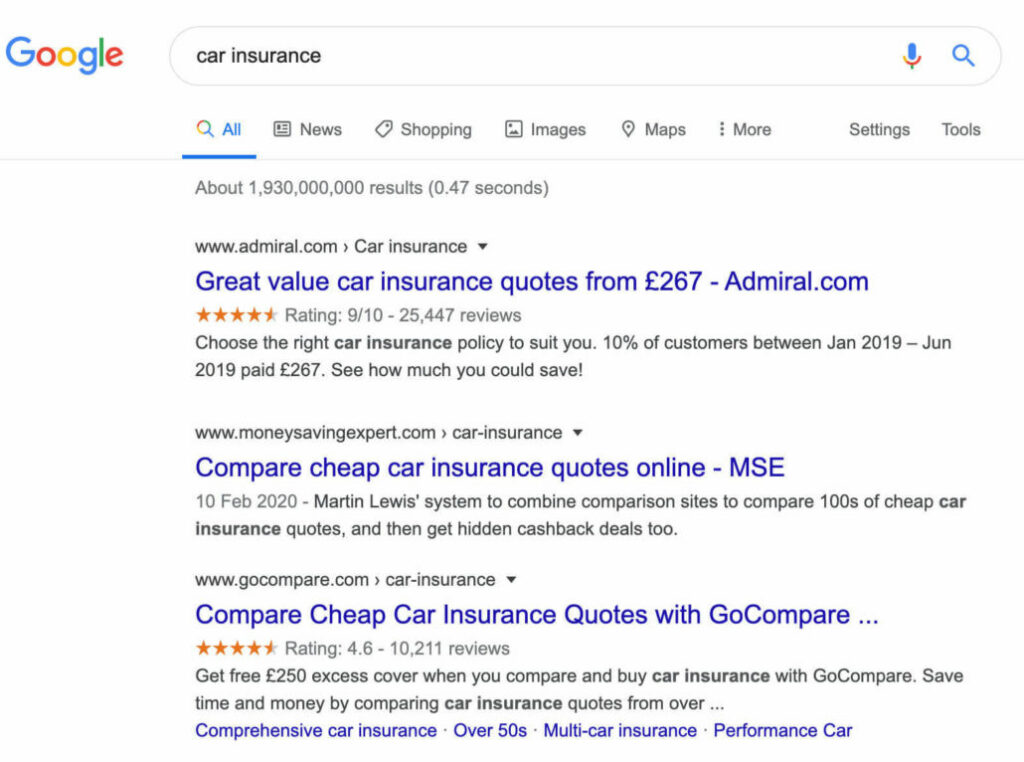
Every result is from a huge brand—Admiral, MoneySavingExpert, GoCompare etc.
This is a clear sign that those who are looking for car insurance typically want it from a well known, established brand. Ranking on page 1 against these guys would be tall order even for the smartest SEO.
Make sure you take note of the websites you see on page 1 for the keywords you want to target, if over 50% of them are big well-known brands, then have a rethink and niche down some more.
Once you find the keywords you are happy with you to need to optimise your actual page to include these keywords on them, however, just don’t just stuff them anywhere, you want to include them in the key placeholders.
Find out where we place keywords by downloading our EXACT 5 step process we use at ClickSlice when optimising websites to get them on page 1.
3 - High-Quality Content
Once users are on your site, it’s your job to keep them there. Whilst getting your keywords included in the key place holders are critical, users won’t stick around for subpar content. That’s why you need strategic content optimisation and management to ensure you get on page 1 on Google.
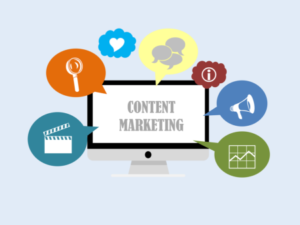
When you fill your webpages with innovative and original content, you’re giving users a reason to stay on your site and increasing the amount of time they spend on each page. This is a massive ranking factor and something Google measures.
If people are coming onto your website and only spending 2 seconds on your page then its a signal to Google that your content isn’t great, as a result, Google will give your website lower rankings, resulting in no organic traffic.
You want to make sure your content read wells, is engaging and gives people a reason to read on.
Also, pay close attention so what you are writing on your website and ensure it answers exactly what the person searches for.
For example, you would have found this article by searching for “How to get on page 1 on google” or something along those lines, as a result, this whole article is focused on giving you information about how you can get onto page 1. If we were to start talking about Youtube ads or something irrelevant then you would lose interest.
Your customers are no different, focus on providing high quality and relevant content
Pro Tip – Everything you publish on and off your site is ‘content’. From your homepage and blog to your social media posts and meta descriptions; everything you publish online should be part of your content optimisation strategy.
4 - Backlinks
What happens behind the scenes of your website is just as important as what users can see. Backlinks are simply a mention of your website on an external website, backlinks are seen as a vote of confidence in the eyes of Google.
However, you don’t want just any old backlink for your site, you want high-quality backlinks that are relevant.
Securing backlinks from high-authority domains is one of the most effective ways to boost your rankings. Of course, obtaining these backlinks isn’t easy. Domain authority is based on a score from 1-100; the higher your score, the better your domain authority.
When high authority domains are linking to your webpages, it boosts the reputation and authority of your site.
One way to obtain backlinks to your website is to reach out to authoritative websites in your niche and ask if you can submit a guest post on their website.

A guest post is simply where you write an article as a “Guest” and it gets posted on an external website.
The article you write for the site would contain a link in it which links back to your website.
It’s a little time intensive and explains why over 55% of webpages don’t have any backlinks at all.
However, it’s 100% worth the effort. In fact, It’s exactly the method we used to rank ClickSlice on page 1 on google for “local SEO services London”.
5 - Site Functionality
Lastly, to rank highly, your site needs to be SEO-friendly and deliver a great user experience (UX). This means fixing broken links, optimising the structure and increasing loading speeds. In addition, you’ll need to ensure your site meets Google’s mobile-first indexing requirements. (Hint – responsive web design is an easy and effective way to achieve this).
By making your site intuitive and logical, you’re on the right track. A slick design can certainly enhance a website, but its functionality needs to come first. Think of your site’s structure as its foundations – without a solid grounding, everything else falls apart.
Make it easy for users to navigate your site, even if they’re first-time visitors.
By maintaining an intuitive, user-friendly and fully functional website, you have the building blocks you need to get on page 1 on Google.
Get on Page 1 on Google – And Stay There!
Getting to page 1 on Google can transform your business. With increased brand awareness, higher conversion rates and increased sales, higher rankings quickly equate to better commercial performance.
But getting to page 1 on Google isn’t your only aim. Staying on page 1 on Google is just as important for long-term business success.
With over 200 Google algorithms to contend with, maintaining placement on page 1 isn’t easy. In fact, it requires consistent optimisation across an ever-increasing list of parameters.
In addition, you’ll need to predict how Google’s ranking and indexing algorithms will change over time. As new tech comes to the forefront, for example, you need to know how it will change user behaviour and algorithms in order to optimise your content and maintain your rankings.
While these 5 tips give you the basics of things you need to consider to improve your website rankings, we’ve also put together the EXACT 5 step process we use at ClickSlice to optimise websites to get them on page 1.
Grab a FREE copy of it today and start getting your website moving in the right direction.




